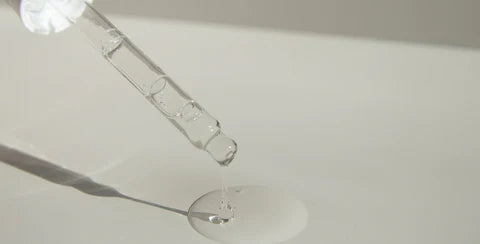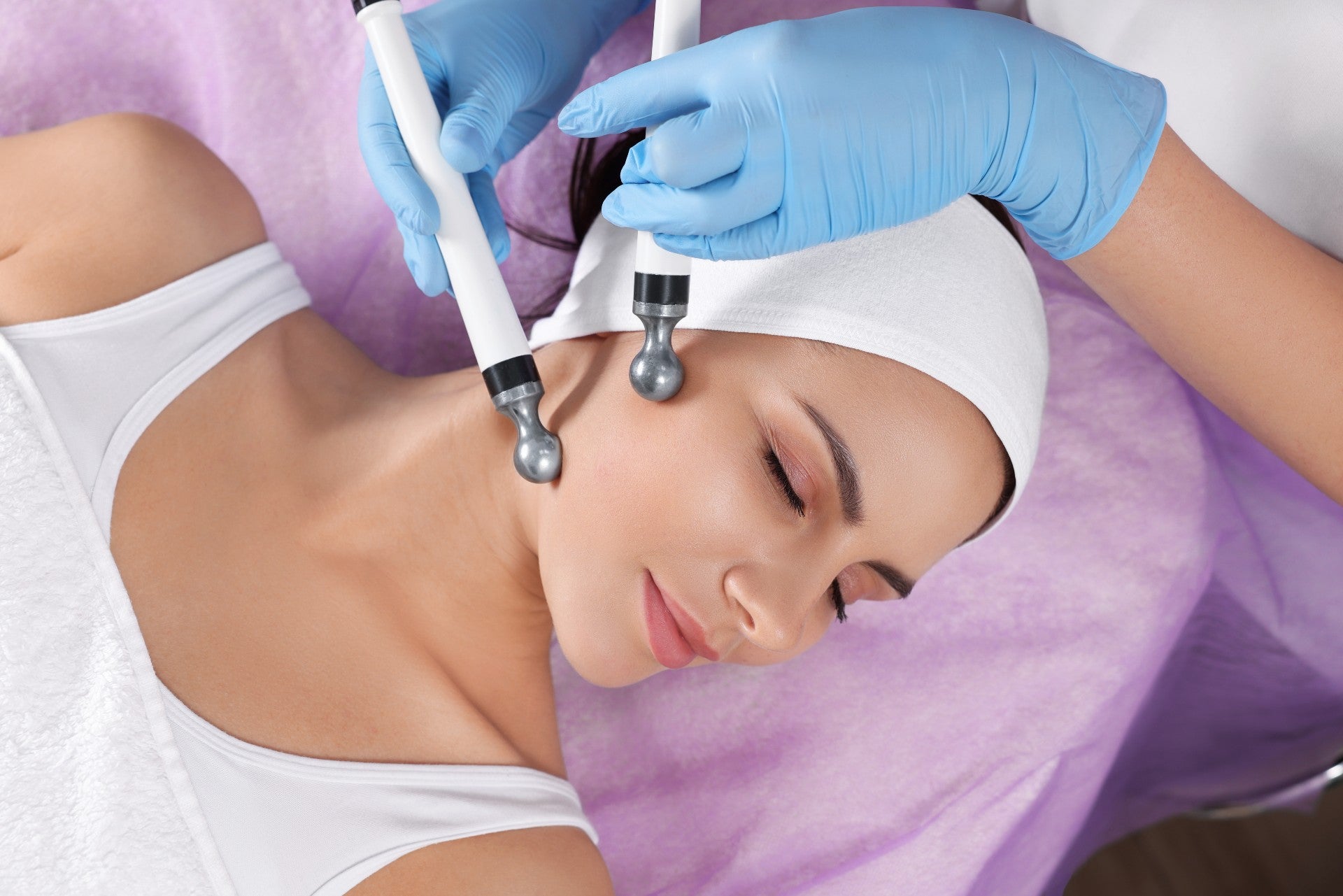Medically Reviewed by Dr. Lisa Hartford, MD
As we age, both our body and mind experience a range of transformations. Both intrinsic (genetic predisposition, chronological aging, etc.) and extrinsic factors (pollution, sun exposure, and lifestyle choices) contribute to the loss of skin elasticity and firmness, leading to a droopy and sagging appearance of the skin that we deem as “aging”. To combat these factors and maintain youthful skin, people have increasingly been turning towards cosmetic treatments. These treatments have a biophysical impact on the skin causing changes in the skin’s structure and function.
Many skin-tightening treatments are available in the market with the possibility of many different biophysical effects. The aforementioned impacts are triggered at the cellular level, resulting in alterations to the fundamental composition of skin cells that enhance the overall appearance. This article will explore several widely-used methods for firming the skin, examine the cellular mechanisms involved, and analyze how they can be utilized to achieve the desired outcome of tighter skin.
The Building Blocks of Firm Skin
Two key proteins that are vital in maintaining skin firmness are collagen and elastin. Collagen provides structural support and rigidity to the skin, ensuring it retains its shape, while elastin allows the skin to stretch and recoil without tearing or being permanently stretched. Together, they give the skin its elasticity and firmness.
They are both essential proteins for the skin's youthful appearance. Despite their similar roles, there are numerous distinctions between them.
Collagen:
- The skin contains the highest amount of collagen (between 25% and 35%) which contributes greatly to the body's total protein. Additionally, within the human body, 28 distinct variations of collagen exist, depending on the specific tissue or organ where it is found. However, its main role remains consistent: offering essential structural reinforcement to various tissues such as bones, skin, tendons, and ligaments.
- The arrangement of collagen fibers within the skin provides strength, structure, and firmness. These collagen strands play a vital role in binding skin cells together, allowing other essential components like hyaluronic acid and elastin to function optimally.
- The triple helix structure of collagen and hydrogen bonding gives the skin its tensile strength, allowing it to resist stretching and keep its shape. It keeps the skin from sagging and assists with reducing skin drooping.
- At the point when collagen production diminishes because of advanced age, wrinkles, sagging, and different signs of skin aging likewise show up.
- Other things, like spending time in the sun, living in a polluted environment, and having habits such as smoking or a tendency to consume processed food can speed up the breakdown of collagen and make the skin less firm.
Elastin:
- One more protein found in the skin and other connective tissues is elastin. It is liable for improving the versatility and adaptability of the skin.
- Elastin strands empower the skin to stretch and backlash, permitting it to get back to its unique shape in the wake of being extended or compacted.
- Elastin and collagen work in tandem to maintain the skin's firmness and act as a structural support. They also allow the skin to stretch without losing its shape and assist in preventing the formation of wrinkles and fine lines.
- Similar to collagen, the synthesis and density of elastin decline as one age, resulting in a reduction of skin elasticity and firmness. This contributes to skin sagging and the diminished capacity of the skin to regain its original position.
Hyaluronic acid:
- Another emerging component that contributes greatly to skin health is hyaluronic acid:
- This is a glycosaminoglycan (a class of carbohydrate polymers present in the skin).
- It consists of alternative units of D-glucuronic acid and N-acetylglucosamine, and its most crucial roles lie in regulating the ability of adjacent muscular connective tissues to slide against each other while it also allows tissues to resist compression and repair of skin tissue when exposed to UVB light.
- Due to its highly anionic properties, it can attract water to swell and create volume and provide structural support.
- As it contributes to full and hydrated-looking skin, it has turned into a famous part of skincare routine items like facial serums and creams, though it is likewise being utilized as a dermal filler to be used in deep lines, acne scars, etc.
All three of these, work together to maintain the firmness and elasticity of the skin. Collagen provides structural support and tensile strength, while elastin allows the skin to stretch and recoil. The balance between these two proteins is crucial for maintaining youthful and healthy-looking skin. Hyaluronic acid adds to hydrated-looking skin and safeguards it from UV rays.
The Importance of Skin Firmness
Skin firmness is a crucial aspect of healthy and youthful-looking skin. It encompasses the flexibility and tightness of the skin and serves as a vital measure of the effectiveness of aesthetic treatments. Collagen and elastin, two widely recognized fibrous proteins, have a substantial impact on skin firmness. The production of these proteins is carried out by fibroblasts, specialized cells found in the dermis, which is the layer of skin beneath the epidermis.
The contribution that skin firmness makes to the overall appearance and health of the skin is what makes it so significant. Firm skin is associated with a more youthful and rejuvenated look. Conversely, a decline in skin firmness can result in sagging, wrinkles, and fine lines, giving the skin an aged appearance.
A large number of external and internal factors can impact the rate of skin deterioration. The primary cause is the natural aging process. As we age, the production of collagen and elastin decreases, gradually causing the loss of skin firmness and elasticity. Another factor is genetic disposition. These intrinsic variables are those which can't be changed, yet extrinsic elements like sun exposure, pollution, smoking, and poor skincare and eating habits, which can speed up the breakdown of collagen and elastin, compromising skin firmness, can be modified.
Preserving skin firmness is crucial to uphold our appearance and preventing signs of aging. Employing a consistent skincare regimen, leading a healthy lifestyle, sun protection, and considering non-invasive treatments can all contribute to enhancing and maintaining skin firmness. By prioritizing the care of our skin and implementing these approaches, we can foster a more youthful and lively appearance.
Now let us delve into the cellular mechanism that causes skin firming.
Cellular Mechanisms of Skin Firming
Some people desire dramatic results when it comes to their skin, and for this reason, aesthetic treatments have been rapidly gathering attention. These treatments affect skin cells in such a way that collagen and elastin synthesis receive a boost. However, the cellular mechanisms involved in these treatments are complicated and involve various processes within the skin cells. Let's explore these mechanisms in detail.
Collagen Creation and Fabrication
Collagen, a pivotal structural protein, fortifies and reinforces the skin. Multiple cellular mechanisms contribute to collagen production:
Fibroblast Ignition: Fibroblasts, the crucial cells accountable for forming collagen in the skin, increase collagen synthesis when ignited. Various factors, such as growth factors, mechanical provocation, and specific skincare components, can stimulate the signaling pathways within fibroblasts to activate these cells and escalate the synthesis and secretion of collagen molecules like Plasma Fibroblast Therapy: This cosmetic treatment uses a plasma pen to stimulate fibroblasts by discharging high-frequency electrical currents to the skin using a pen-like device. The treatment is fairly new compared to other non-invasive treatments, however, it has already been proven to be effective in treating fine lines, wrinkles, and other signs of aging.
Collagen Gene Expression Stimulation: Certain compounds and ingredients, like retinoids and peptides, can stimulate collagen gene expression in skin cells. This leads to an amplified production of collagen proteins, which enhance skin firmness.
Collagen Synthesis Enhancement: Collagen synthesis encompasses an intricate process of protein assembly and modification. Certain supplements and co-factors, like L-ascorbic acid and zinc, are imperative for collagen union. These substances assume a vital part in the enzymatic responses that convert procollagen particles into mature collagen strands.
Radio Frequency Skin Tightening: By using a radio-emitting device, this method encourages the production of both collagen and elastin. These waves make the dermis, the lower layer of the skin, heat up. This causes the skin to produce more collagen and elastin, which in turn makes the skin look and feel better.
Elastin Fabrication and Elastic Fiber Formation
Elastin, another vital protein implicated in skin firmness, endows elasticity and permits the skin to stretch and snap back. The synthesis and assembly of elastin engage various cellular mechanisms:
Elastin Gene Expression: Analogous to collagen, the expression of elastin genes is regulated by diverse factors. Growth factors and specific signaling pathways can activate the expression of elastin genes, prompting heightened elastin synthesis.
Fibroblast-Mediated Elastin Production: Fibroblasts play a crucial role in the production and secretion of elastin. These cells synthesize and release elastin molecules, which undergo additional enzymatic modifications to form mature elastic fibers. The proper functioning of fibroblasts is pivotal for the synthesis and organization of elastin fibers in the skin. Techniques such as RF therapy and ultrasound therapy can be used to boost the workings of fibroblast cells, leading to an increase in the production of both elastin and collagen.
Extracellular Matrix
The skin's structural support is provided by the extracellular matrix (ECM), a complex network of proteins and other molecules. Multiple cellular mechanisms contribute to ECM remodeling:
Matrix Metalloproteinases (MMPs): MMPs, a group of enzymes, can degrade collagen and other ECM components. The activity of MMPs is meticulously regulated to sustain the equilibrium between ECM breakdown and synthesis. In skin firming, it is crucial to obstruct excessive MMP activity to avert collagen degradation and retain skin firmness5.
Tissue Inhibitors of Metalloproteinases (TIMPs): TIMPs, endogenous proteins, regulate the activity of MMPs. They function as inhibitors of MMPs, circumventing excessive ECM degradation. The harmony between MMPs and TIMPs is pivotal for ECM remodeling and the preservation of skin firmness.
Cellular Signalling Pathways
Several cellular signaling pathways are implicated in skin firming. These pathways regulate gene expression, protein synthesis, and cellular processes that contribute to skin firmness. Some key signaling pathways include:
Transforming Growth Factor-beta (TGF-β) Pathway: TGF-β, a cytokine, influences collagen synthesis and ECM remodeling. It stimulates fibroblasts and collagen production and orchestrates the expression of ECM-related genes1. Activating the TGF-β pathway has the potential to invigorate skin firmness and increase overall skin quality.
MAP Kinase Pathway: The Mitogen-Activated Protein Kinase pathway is involved in various cellular processes, encompassing collagen synthesis and fibroblast activation. It is influenced by growth factors and mechanical provocation, resulting in escalated collagen production and increase skin firmness.
Skin firmness is dependent on various cellular mechanisms: including collagen production, elastin synthesis, ECM remodeling, and cellular signaling pathways. These mechanisms are all interconnected to maintain the structure and the elasticity of the skin. Comprehending these cellular processes is crucial for the development of useful strategies and treatments to improve skin firmness. By targeting these mechanisms, skincare products and aesthetic treatments can promote collagen and elastin production, inhibit ECM degradation, and enhance skin firmness.
Methods of Achieving Skin Firming
There are several methods available to achieve skin firming, ranging from topical treatments to non-invasive procedures. Here are some common approaches:
Skincare Products and Ingredients:
It's important to use the right skincare products and include specific ingredients to increase skin firmness. Here are a few key contemplations:
- Retinoids: It has been demonstrated that retinoids—also known as vitamin A derivatives—can boost collagen production and improve skin elasticity. They can make the skin appear firmer and less prone to wrinkles and fine lines.
- Peptides: Peptides are short chains of amino acids that can instruct the skin to produce more collagen and elastin. This might diminish the signs of aging by improving skin firmness and elasticity.
- Hyaluronic Acid: The ingredient hyaluronic acid can hydrate the skin and make it more elastic and plump. The skin appears firmer as a result of its ability to attract and store moisture.
- Antioxidants: Antioxidants like L-ascorbic acid and green tea concentrate can protect the skin from free radicals and oxidative stress. A deficiency of antioxidants leads to the breakdown of collagen and a decrease in skin firmness.
- Moisturisers: Firmness can only be maintained by keeping the skin hydrated. Creams that contain ingredients like ceramides and glycerin aid in moisture retention and strengthen the skin barrier.
Facial Exercises and Massage:
Facial exercises and massage techniques can improve blood circulation, stimulate collagen production, and enhance skin firmness. These exercises involve targeted movements and resistance training for the facial muscles. Regular practice can tone and tighten the underlying muscles, resulting in firmer-looking skin.
Acupressure and lymphatic drainage massage, two types of facial massage, can also improve the delivery of nutrients to the skin cells, increase blood flow, and reduce fluid retention. Improved skin firmness and a more youthful appearance result from this.
Non-Invasive Procedures:
The firmness of the skin can be helped by a number of non-invasive procedures. Dermatologists or aestheticians typically carry out these procedures, which can produce noticeable results without requiring surgery. The following are some common non-invasive procedures for skin firming:
- Radiofrequency (RF) treatment: By heating the deeper layers of the skin with radiofrequency energy, RF therapy stimulates collagen production and tightens the skin. It may assist in enhancing the firmness of the skin and reducing the appearance of wrinkles and sagging.
- Ultrasound Therapy: Focused ultrasound energy is used in ultrasound therapy to target specific skin layers, encouraging collagen production and tightening. It can help lift sagging areas and increase skin firmness.
- Laser Resurfacing: Laser, for example, fractionated laser resurfacing, can help collagen production and further develop skin firmness. These devices use laser energy to make controlled miniature wounds in the skin, setting off the body's regular healing reaction and collagen remodeling.
Healthy Lifestyle
- Healthy Diet: Consuming a healthy diet rich in organic products, vegetables, lean proteins, gives fundamental supplements that help collagen production. Supplements like L-ascorbic acid, zinc, and omega-3 unsaturated fats are especially advantageous for skin firmness.
- Hydration: Remaining hydrated is urgent for keeping up with healthy skin. Drinking a sufficient amount of water over the course of the day helps keep the skin hydrated and plump.
- Sun Protection: Shielding the skin from unsafe UV beams is fundamental for healthy skin. Regular use of sunscreen with an SPF of 30 or higher and don’t go in sun during peak sun hours.
- Smoking and Alcohol consumption: Smoking and Alcohol can negatively affect skin well-being, including collagen breakdown and loss of skin firmness. Stopping smoking and alcohol results in general skin well-being.
Nutritional Supplements
Certain nutritional supplements may support skin firmness by providing essential nutrients that contribute to collagen synthesis and overall skin health. Collagen peptides, vitamin C, and antioxidants are commonly used supplements that can help improve skin firmness and elasticity. However, it is important to consult with a healthcare professional before starting any new supplements to ensure safety and effectiveness.
Conclusion
Skin firming involves various cellular mechanisms that aim to stimulate collagen and elastin production, activate fibroblasts, and protect against collagen degradation. Understanding these mechanisms can help individuals make informed decisions about the methods and products they choose for achieving skin firmness. Whether through topical treatments or non-invasive procedures, the goal is to restore the skin's elasticity and tightness, resulting in a more youthful and rejuvenated appearance.
References
- https://www.aad.org/public/cosmetic/younger-looking/firm-sagging-skin
- https://www.ncbi.nlm.nih.gov/pmc/articles/PMC4754297/
- https://www.webmd.com/beauty/what-to-know-about-skin-tightening
- https://www.ncbi.nlm.nih.gov/pmc/articles/PMC7487063/
- https://www.americanboardcosmeticsurgery.org/procedure-learning-center/non-surgical-procedures/skin-tightening/









Leave a comment
All comments are moderated before being published.
This site is protected by hCaptcha and the hCaptcha Privacy Policy and Terms of Service apply.